

Darwin D. Martin House

Martin House
The Darwin D. Martin House Complex, also known as the Darwin Martin House State Historic Site, was designed by Frank Lloyd Wright and built between 1903 & 1905. Located at 125 Jewett Parkway in Buffalo, New York, it is considered to be one of the most important projects from Wright's Prairie School era, and ranks along with The Guggenheim in New York City and Fallingwater in Pennsylvania among his greatest works.
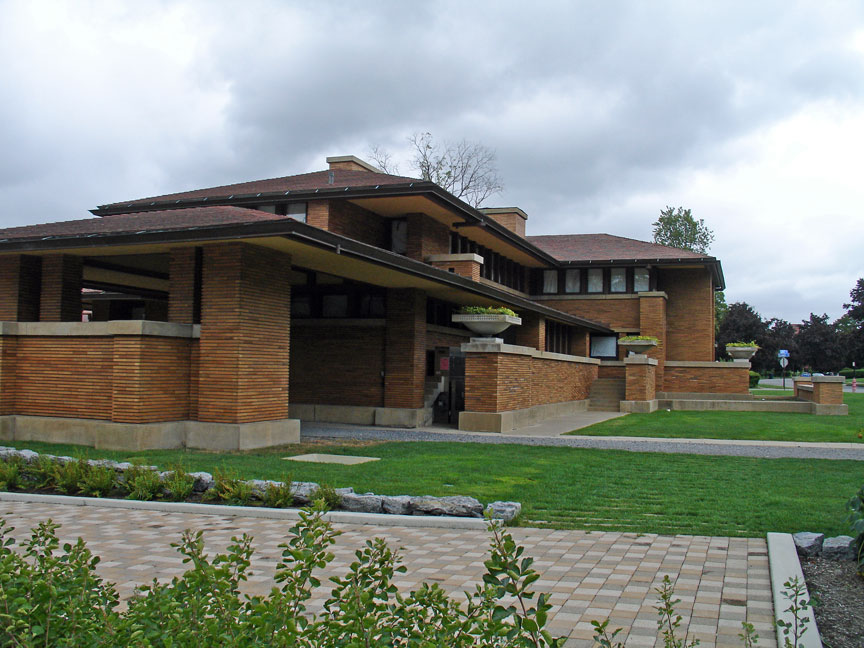
Wright scholar Robert McCarter said of it:
"It can be argued that the Martin House Complex ... is the most important house
design of the first half of Wright's career, matched only by
Fallingwater over
30 years later."

The Martin House Complex was the home of Darwin D. Martin, a businessman, and his wife Isabelle.
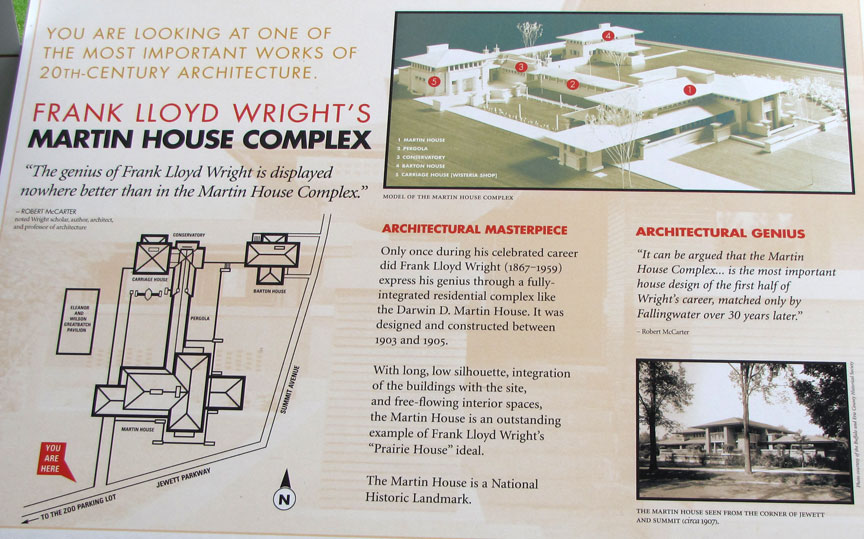
Martin and his brother, William E. Martin, were co-owners of the E-Z Stove
Polish Company based in Chicago. In 1902 William commissioned Wright to build
him a home in Oak Park, the resultant William E. Martin House built in 1903.
Upon viewing his brother's home Martin was significantly impressed to visit
Wright's Studio, and persuaded Wright to view his property in Buffalo, where he
planned to build two houses.
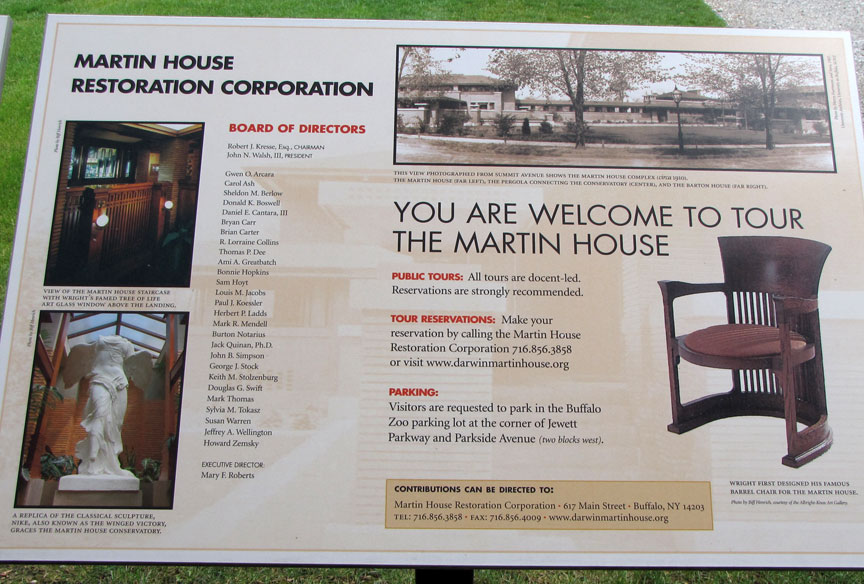
Martin was instrumental in selecting Wright as the architect for the Larkin
Administration Building, in downtown Buffalo, Wright's first major commercial
project, in 1904. Martin was the secretary of the Larkin Soap Company and
consequently Wright designed houses for other Larkin employees William R. Heath
and Walter V. Davidson. Wright also designed the E-Z Stove Polish Company's
Factory built in 1905.
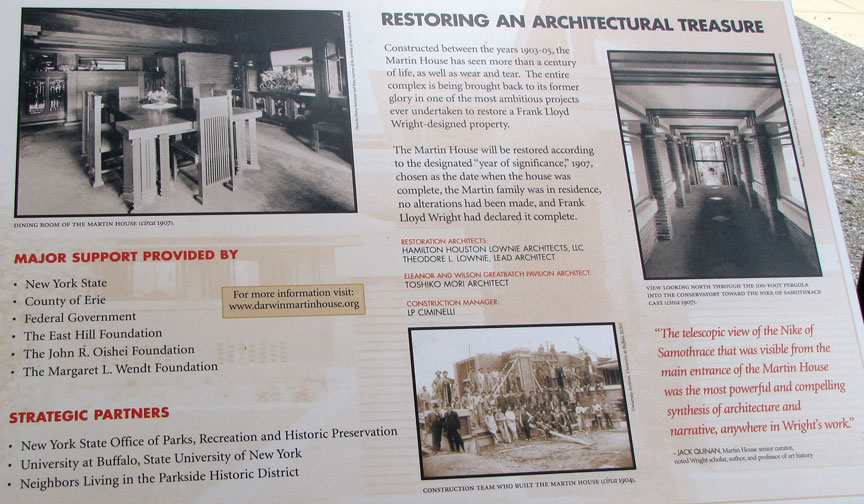
Wright designed the complex as an integrated composition of connecting
buildings, consisting of the primary building, the Martin House, a long pergola
connecting with a conservatory, a carriage house-stable and a smaller residence,
the Barton House, which shares the site and was built for George F. Barton and
his wife Delta, Darwin Martin's sister. The complex also includes a gardener’s
cottage, the last building completed.
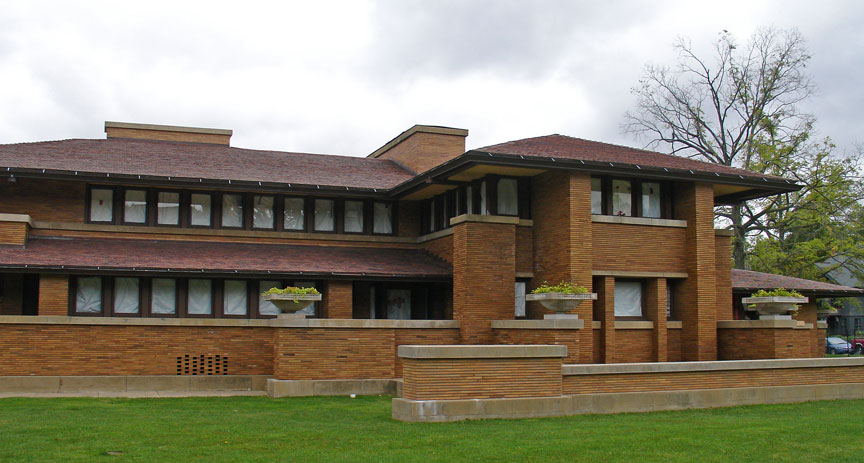
Martin, disappointed with the small size of the conservatory, had a 60ft (18m)
long greenhouse constructed between the gardener's cottage and the carriage
house, to supply flowers and plants for the buildings and grounds. This
greenhouse was not designed by Wright, and Martin ignored Wright's offer "To put
a little architecture on it".
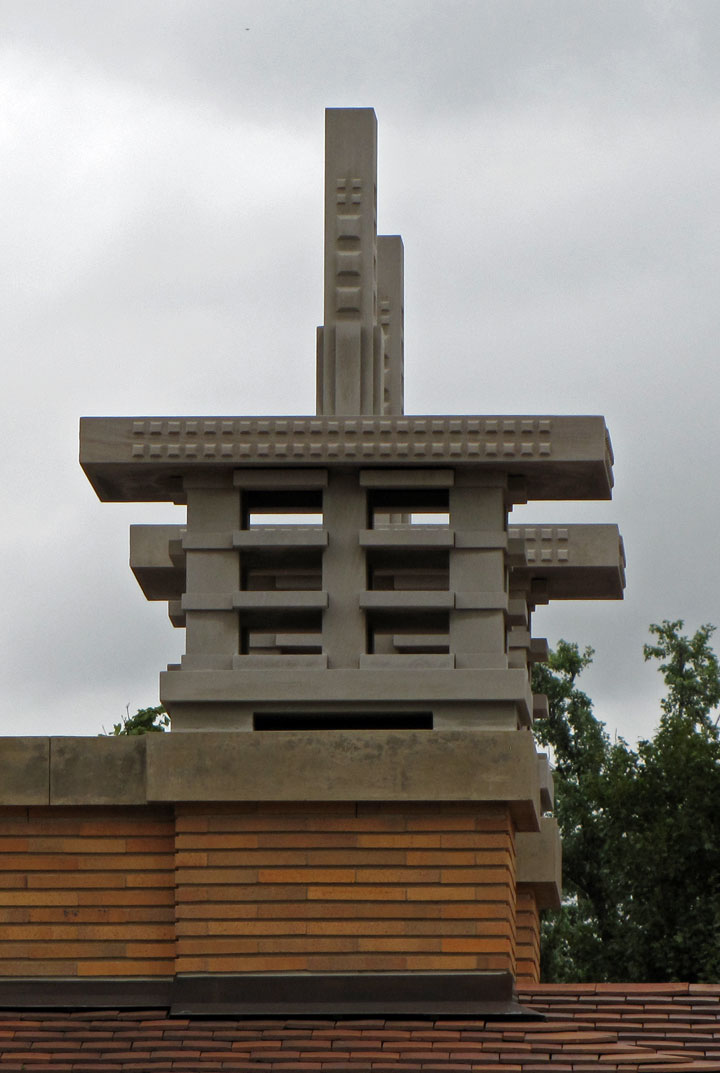
Over the next twenty years a great long-term friendship grew between Wright and
Martin, to the extent that the Martins provided financial assistance and other
support to Wright as his career unfolded.
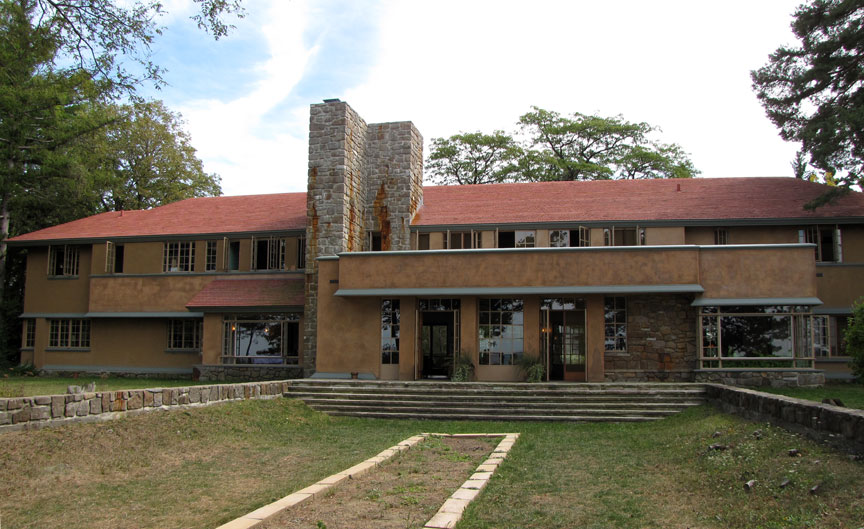
Graycliff
Some twenty years later, in 1926, Wright designed the second major complex for the Martin family, Graycliff, a summer estate overlooking Lake Erie in nearby Derby, NY. The Blue-Sky Mausoleum Wright designed for the Martins in 1928, but never built, was finally installed at Buffalo's Forest Lawn Cemetery in 2004.

Blue-Sky Mausoleum
The complex exemplifies Wright's Prairie School ideal and is comparable with other notable works from this period in his career, such as the Robie House in Chicago and the Dana-Thomas House in Springfield, Illinois. Wright was especially fond of the Martin House design, referring to it for some 50 years as his "opus", and calling the complex "A well-nigh perfect composition".
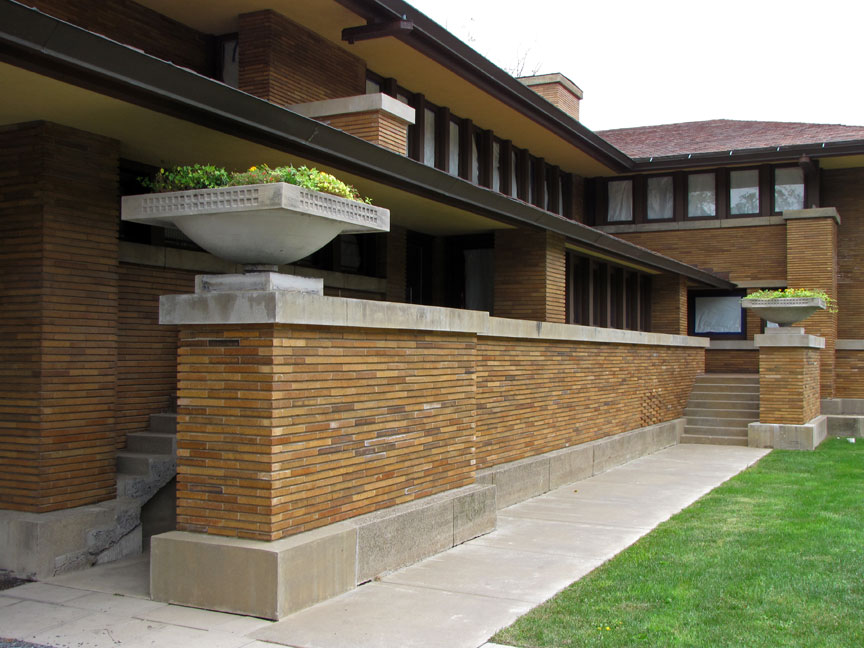
The main motives and indications were: First - To reduce the number of necessary
parts of the house and the separate rooms to a minimum, and make all come
together as an enclosed space--so divided that light, air and vista permeated
the whole with a sense of unity.
— Frank Lloyd Wright, on architecture.
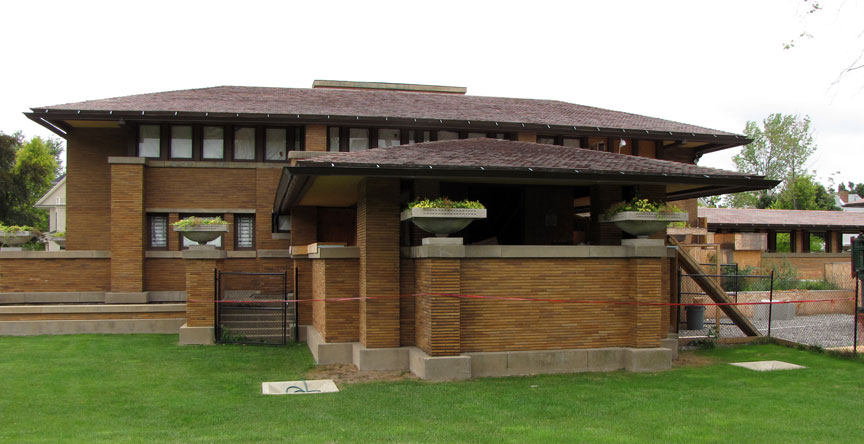
In 1900 Edward Bok of the Curtis Publishing Company, bent on improving American
homes, invited architects to publish designs in the Ladies' Home Journal, the
plans of which readers could purchase for five dollars. Subsequently the Wright
design "A Home in a Prairie Town" was published in February of 1901 and first
introduced the term "Prairie Home". The Martin House, designed in 1903, bears a
striking resemblance to that design. The facades are almost identical, except
for the front entrance, and the Martin House repeats most of the Journal House
ground floor. An awkward failure was no direct connection from the kitchen to
the dining room. The Journal House had a serving pantry, however Wright was
forced to give this up in order to accommodate the pergola.
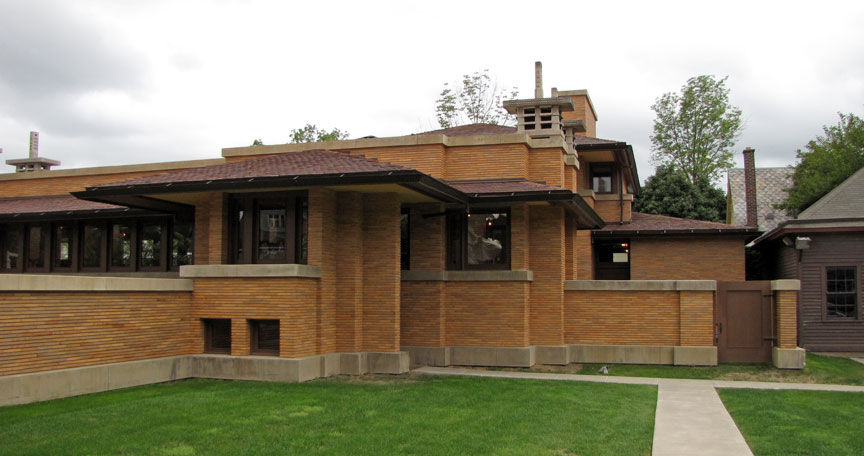
Of particular significance are the fifteen distinctive patterns of nearly 400
art glass windows that Wright designed for the entire complex, some of which
contain over 750 individual pieces of jewel-like iridescent glass, that act as
“light screens” to visually connect exterior views with the spaces within. More
patterns of art glass were designed for the Martin House than for any other of
Wright's Prairie Houses.
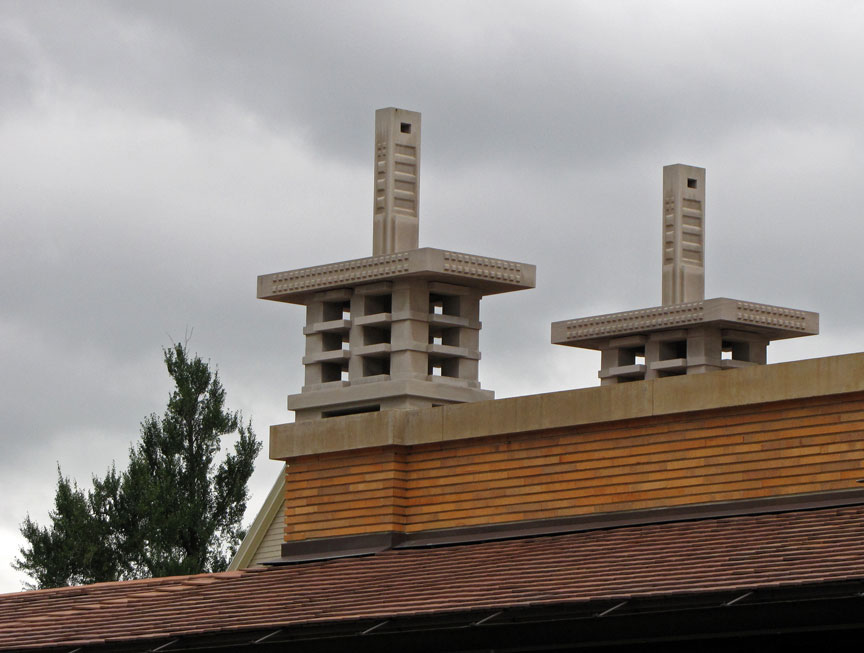
Walter Burley Griffin landscaped the grounds, which were created as integral to
the architectural design. A semi-circular garden which contained a wide variety
of plant species, chosen for their blossoming cycles to ensure blooms throughout
the growing season, surrounded the Martin House verandah. The garden included
two sculptures by Wright collaborator Richard Bock.
* The Complex
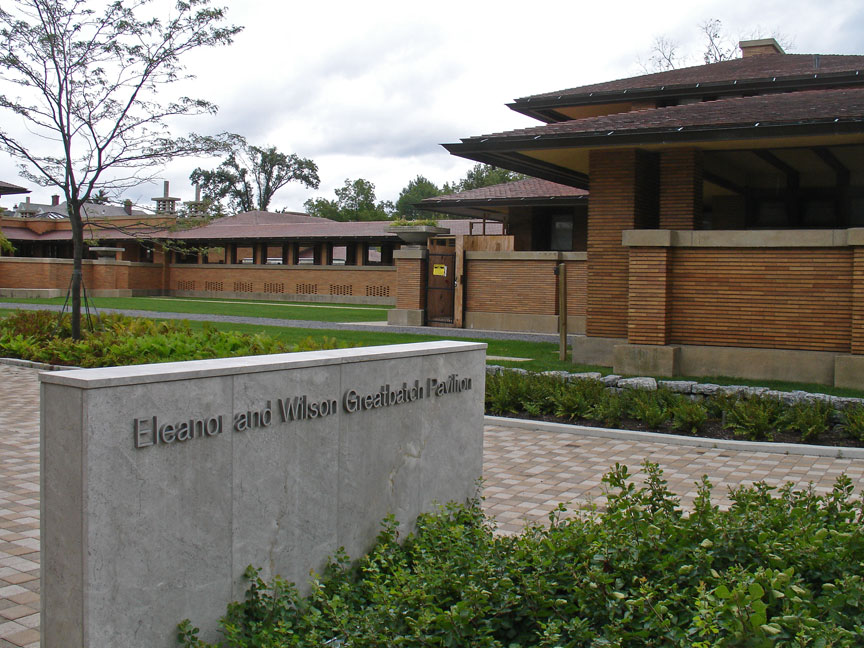
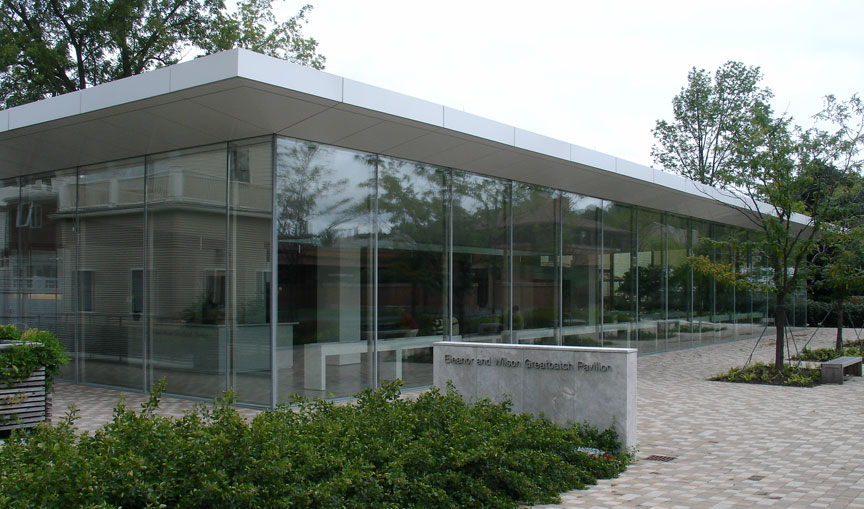
The Eleanor & Wilson Greatbatch
Pavilion Visitor Center, designed by Toshiko Mori
opened March 12, 2009,
The Complex is located within the Parkside East Historic District of Buffalo,
which was laid out by renowned American landscape architect Frederick Law
Olmsted in 1876. Darwin Martin purchased the land in 1902. Construction began in
1903, and Wright signed off on the project in 1907. The original complete Martin
House Complex was 29080ft2 (2700m2).
* The Martin House

Built between 1904 & 1905 the Martin House is distinguished from Wright's other
prairie style houses by its unusually large size and open plan, and is one of
the largest built. Martin had imposed no budget and Wright is believed to have
spent close to $300,000. By comparison Martin's brother's house was in the
vicinity of $5000, and the Ladies' Home Journal design quoted at $7000. On the
ground floor a library, dining room, and living room all open into each other,
with the dining room continuing out to a large covered porch. The porch at the
east end is balanced by the porte-cochere at the opposite end. On the second
floor there are eight bedrooms, four bathrooms, and a sewing room. The Martin
House is located at the south end of the complex, at 125 Jewett Parkway,
Buffalo.
* The Barton House
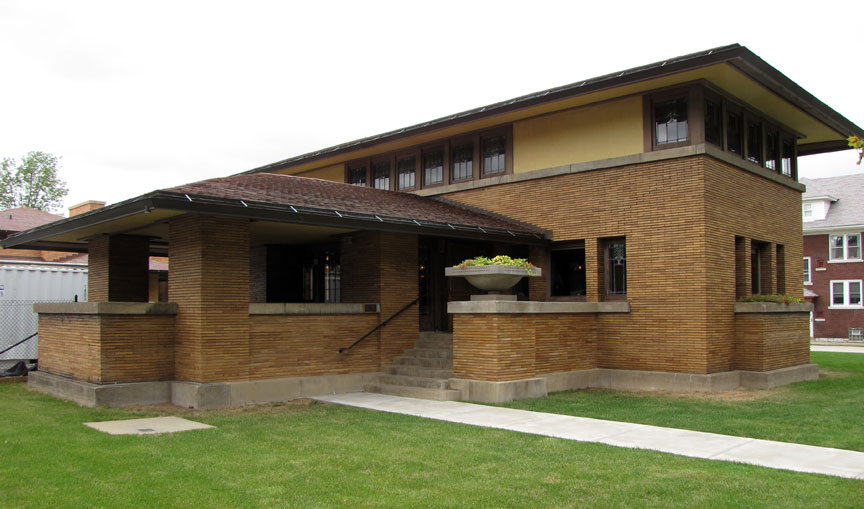
Barton House
Construction on the
Barton House began first in 1903 and not only was it the
first building of the complex to be completed but also the first of Wright's in
Buffalo. The principal living spaces are concentrated in the center two story
portion of the house where the reception, living and dining areas open into each other.The two main bedrooms are on the second story, at either end of a narrow
hall. The kitchen is at the north end, while an open porch is at the south. The
Barton House is on the east side of the complex, at 118 Summit Avenue, Buffalo.
* The Carriage House
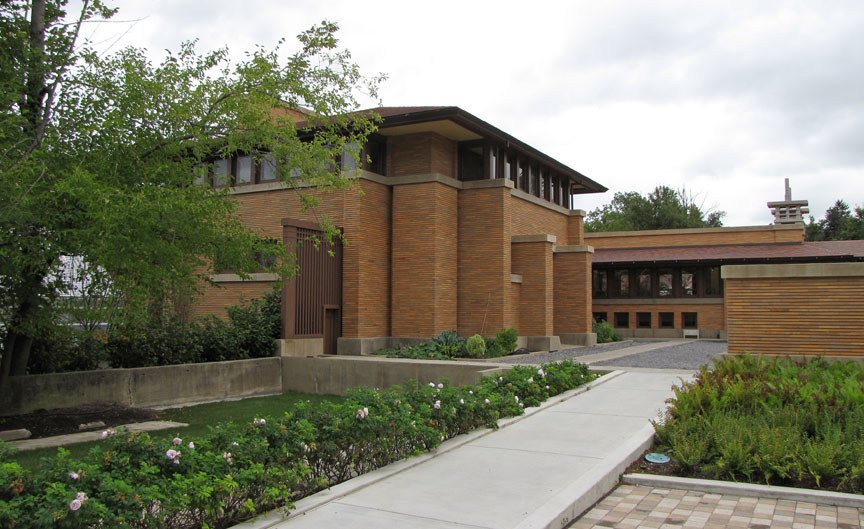
Carriage House on the left
Over the years the Carriage House served a number of purposes. Originally as a stable with horse stalls, a hay loft, and storage for a carriage. In later years as a garage with a service area for a car, and an upstairs apartment for a chauffeur. It also contained the boilers for the complex's heating system. The Carriage House was built between 1903 & 1905. The original structure was demolished in 1962, and rebuilt during the restoration between 2004 & 2007. The Carriage House is at the north end of the complex, directly north of the Martin House porte-cochere, to the west of the Conservatory.
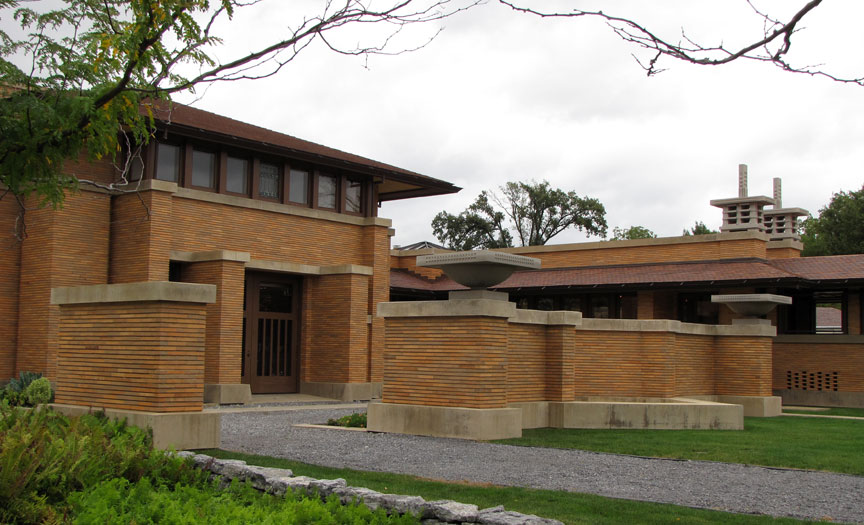
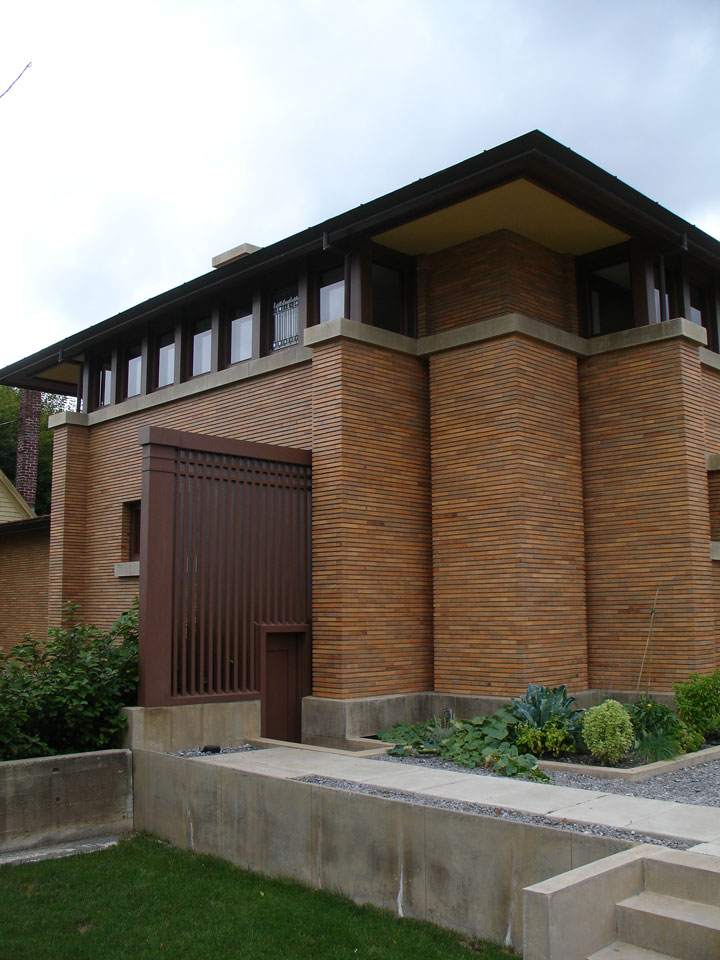
* The Gardener's Cottage
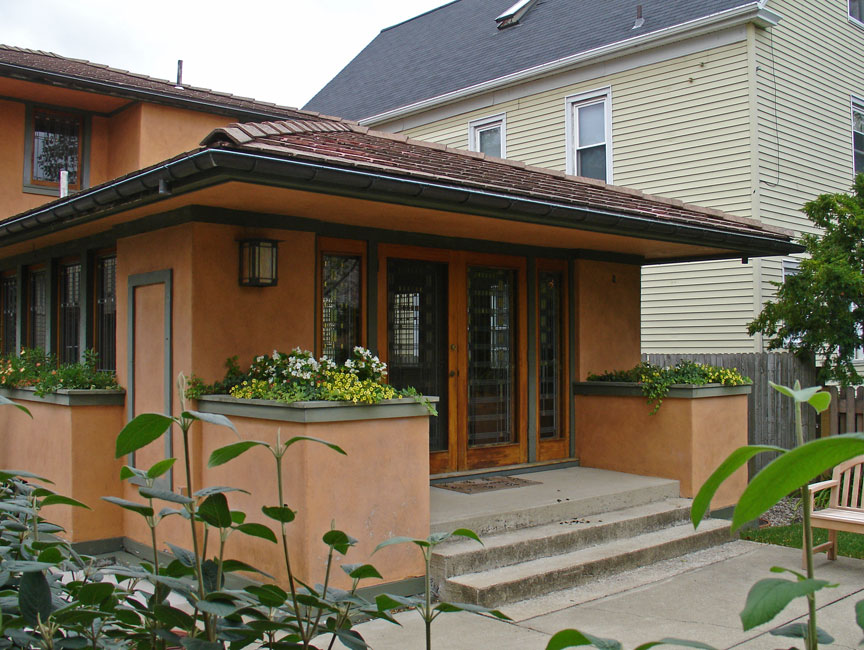
Gardener's Cottage
Built in 1909 of wood and stucco the Gardener's Cottage is so modest in size that a boxy configuration appears to have been inevitable, contrary to Wright's ideal of opening up the confining "box" of traditional American houses. Nevertheless, Wright managed to create an illusion of the pier and cantilever principle that characterized the Martin House by placing tall rectangular panels at each corner of the building. The gardener was Reuben Polder who had to provide fresh flowers daily for every room in the Martin House, a task which he completed until Darwin Martin died in 1935. The Gardener's Cottage is on the west side of the complex, at 285 Woodward Avenue, Buffalo.
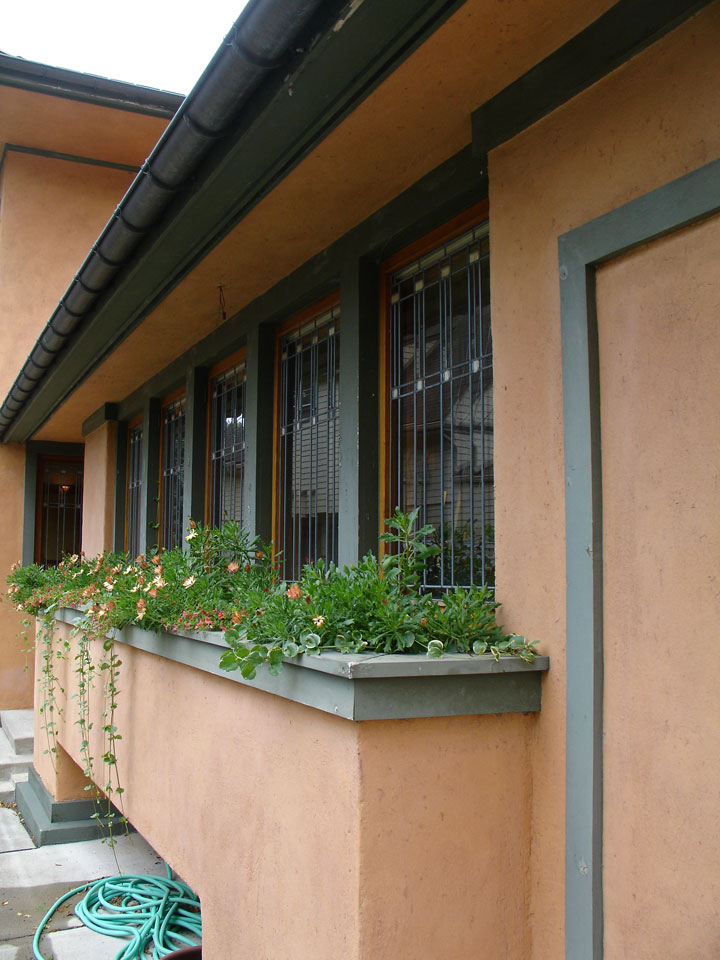
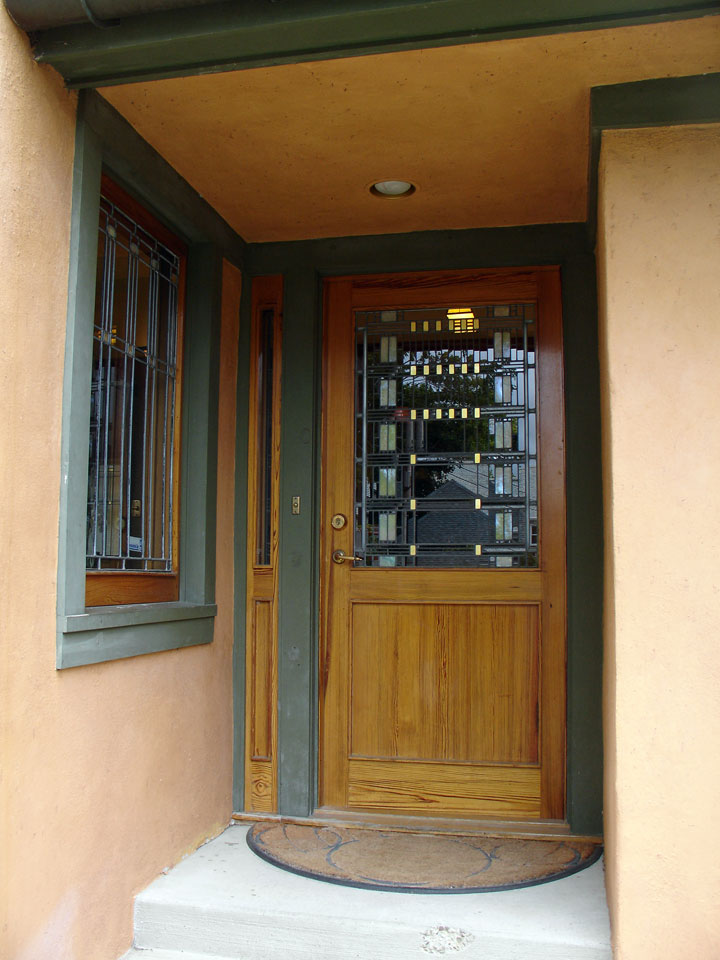
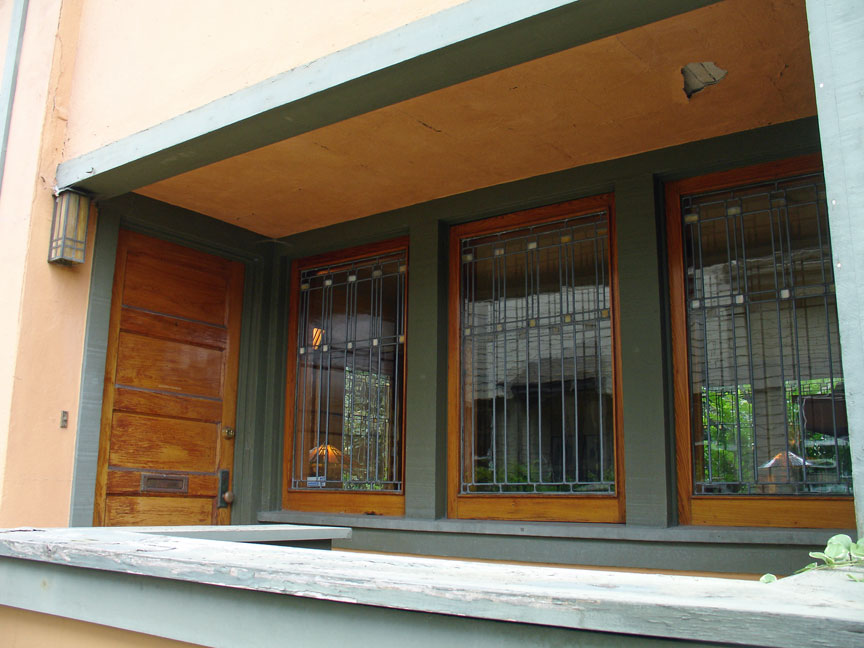
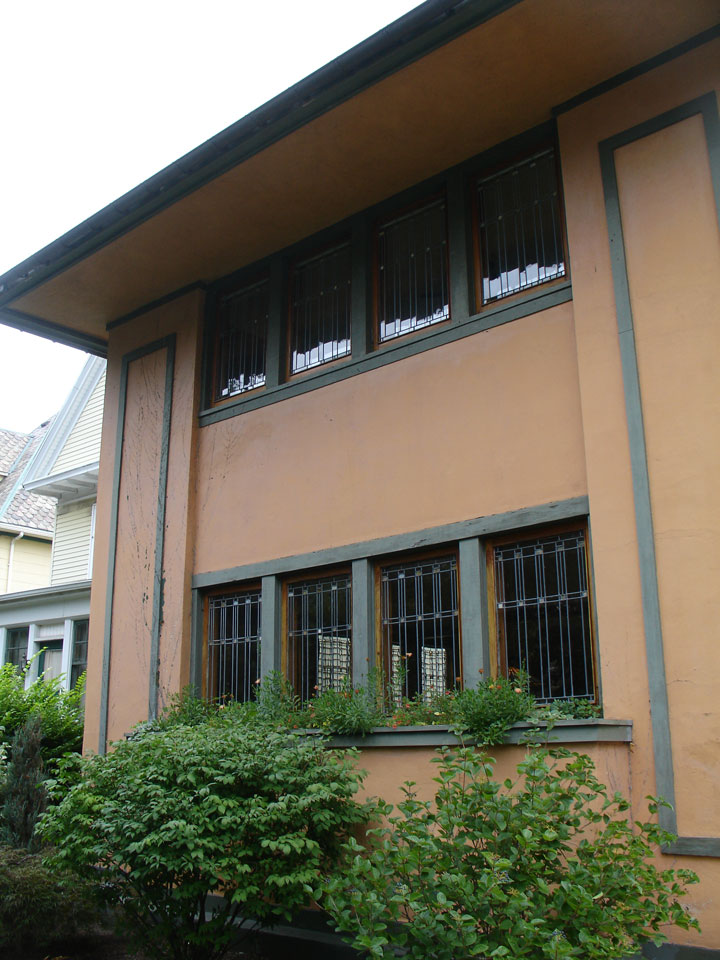
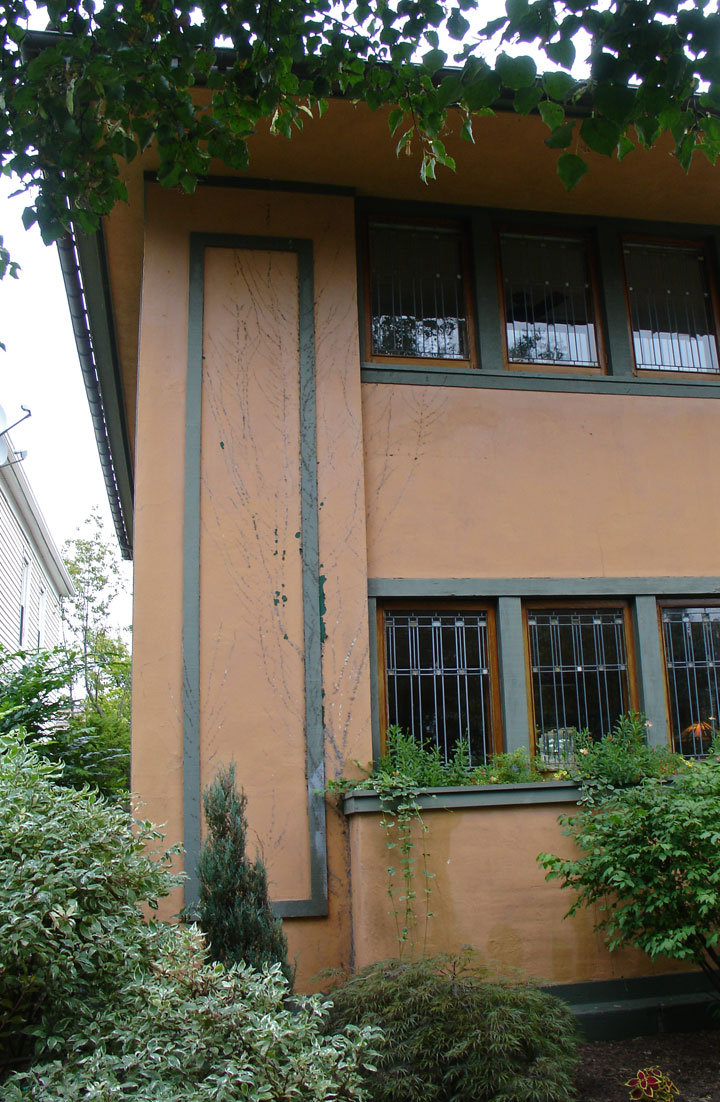
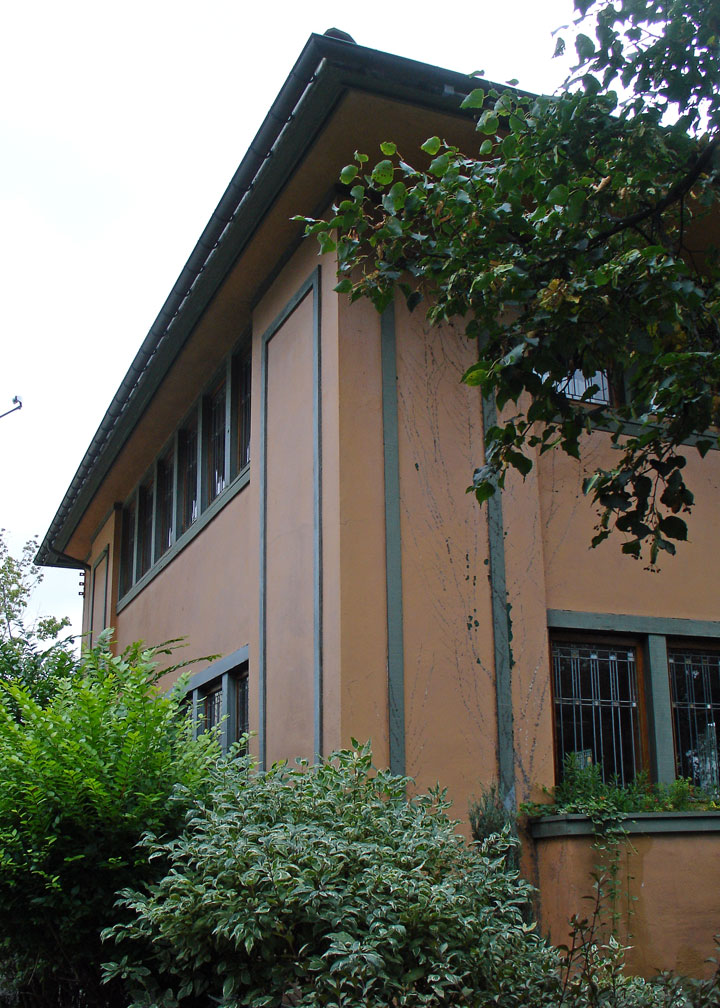
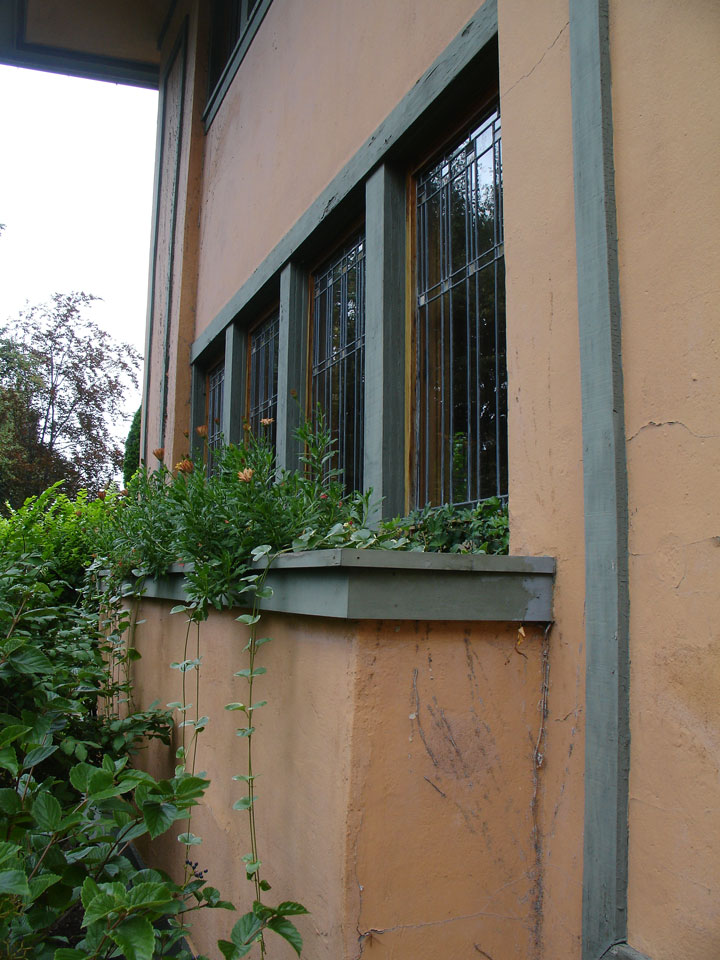
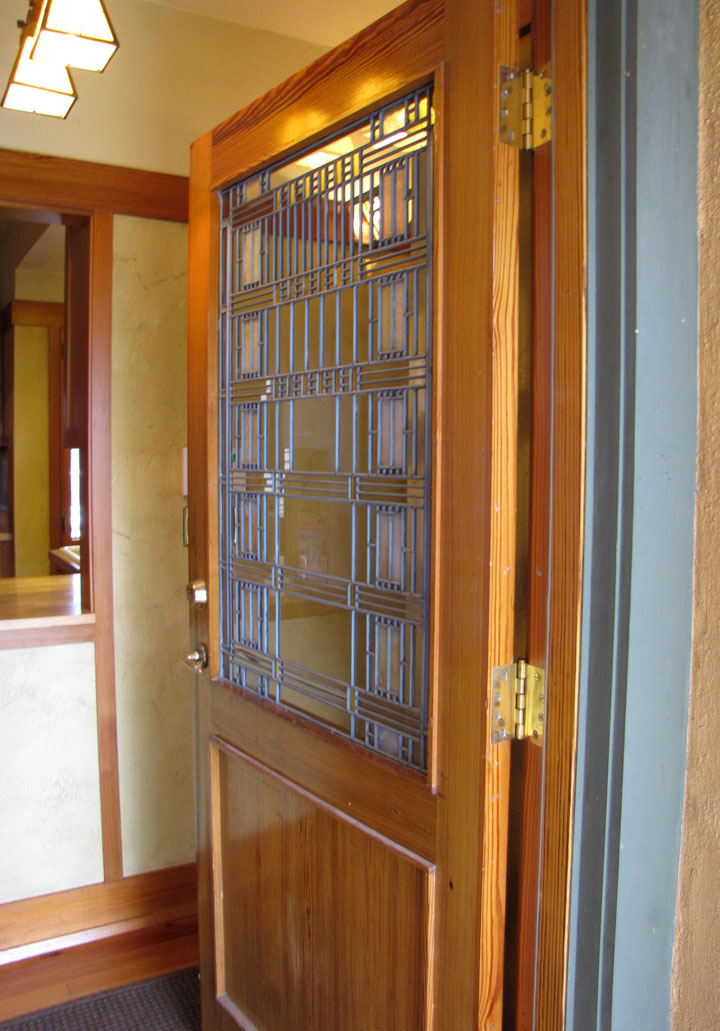

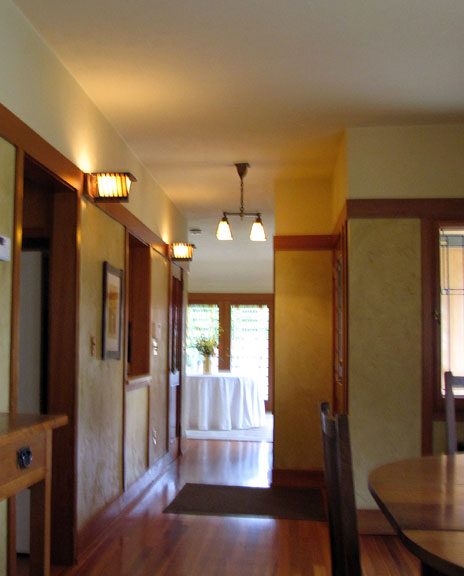
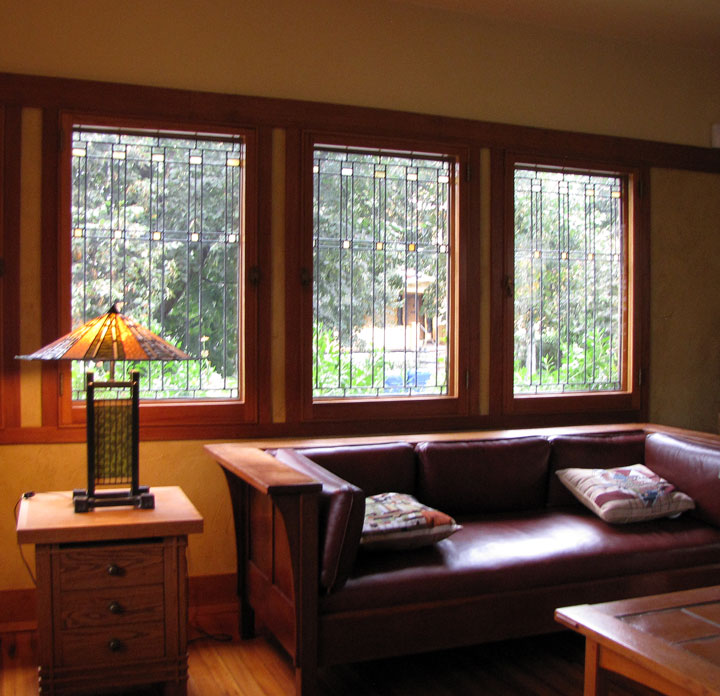
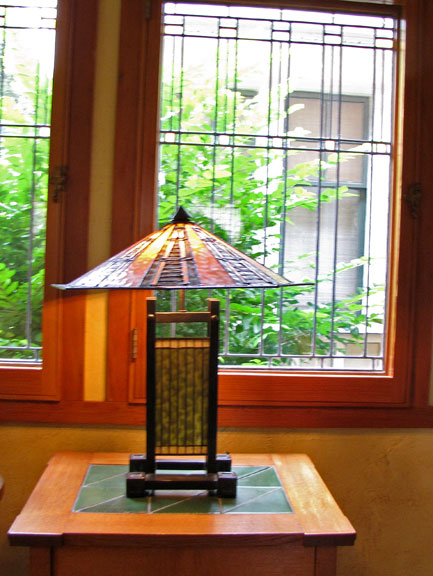
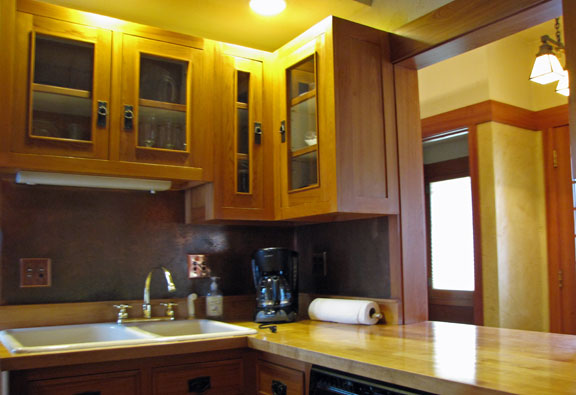
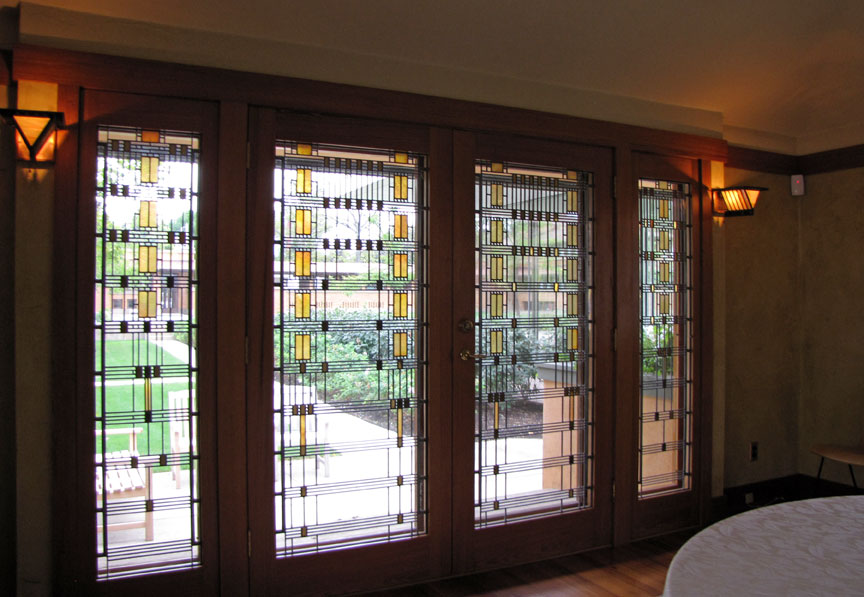
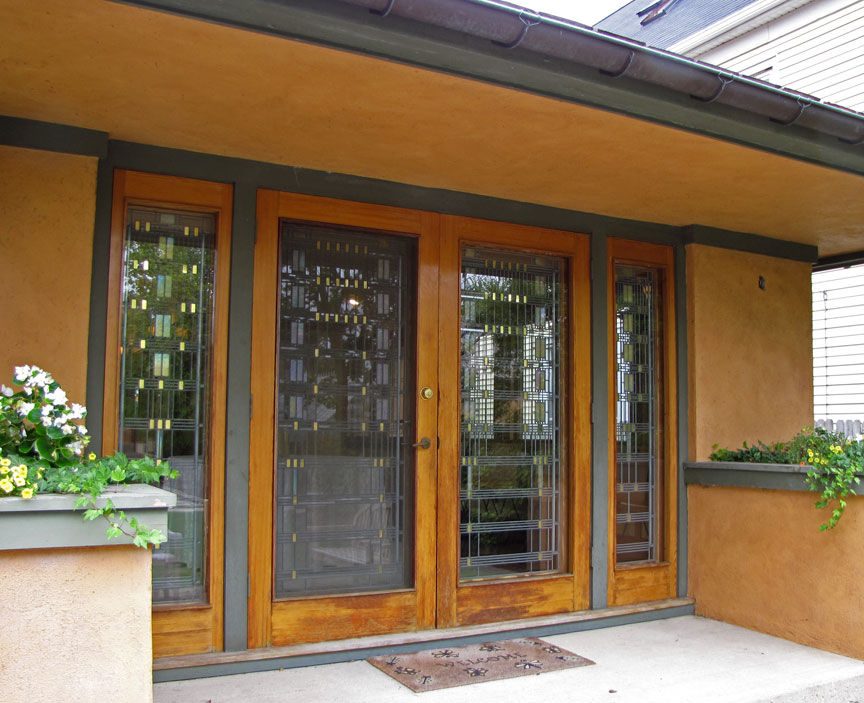

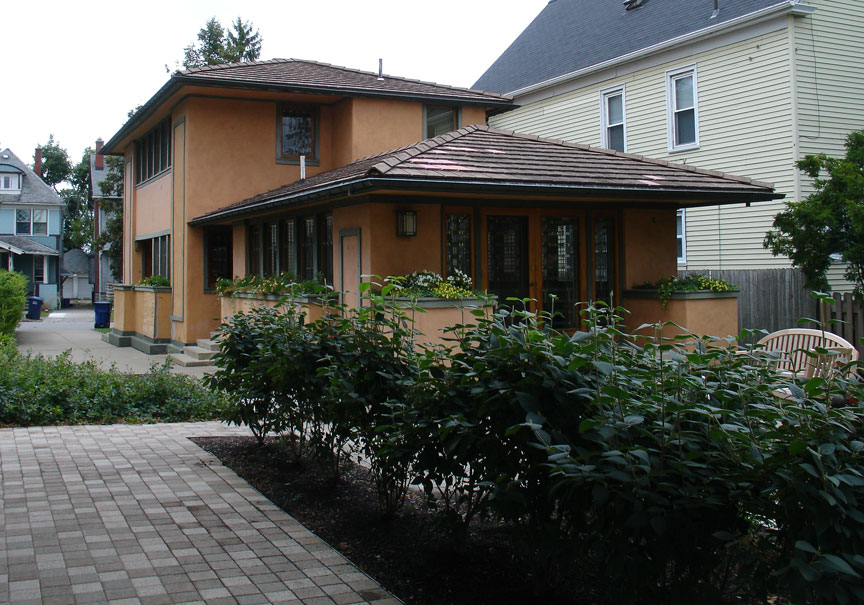
* The Conservatory
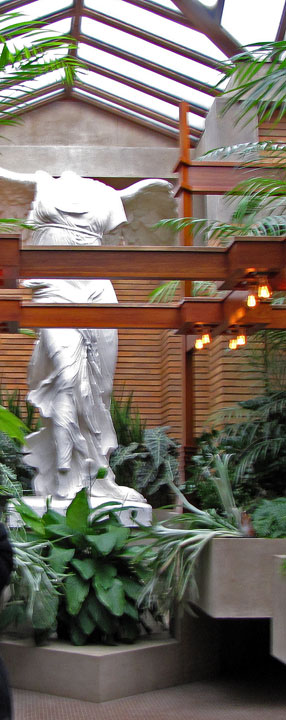
Built for plant growing the Conservatory features a glass and metal roof
supported by brick piers. A plaster cast of the Winged Victory of Samothrace
stands at the entrance. The original conservatory was demolished in 1962, and
rebuilt between 2004 & 2007 as part of the restoration. The Conservatory is
at the north end of the complex between the Carriage House and the
Barton
House.
* The Pergola
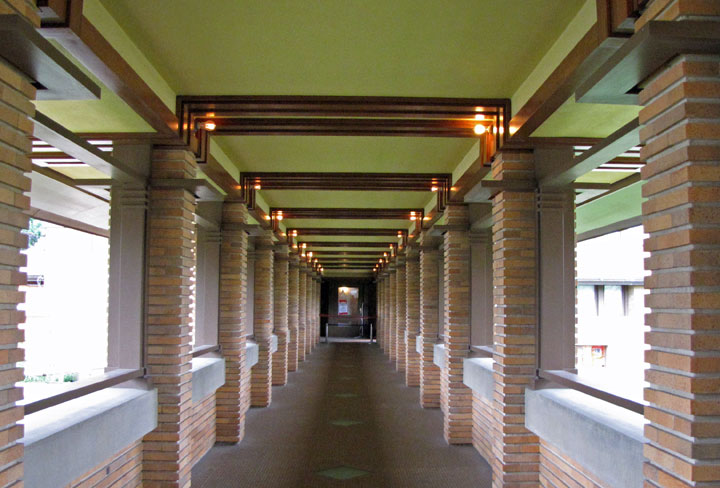
The glass enclosed pergola runs from the entrance hall of the Martin House to
the entrance of the conservatory, and is about 100ft (30m) long. The original
pergola was demolished in 1962, and was rebuilt between 2004 & 2007. The Pergola
is at the center of the complex, running north-south between the Martin House
and the Conservatory.

Following the loss of the family fortune, due to the Wall Street Crash of 1929,
the Great Depression, and subsequently Darwin Martin's death in 1935, the family
abandoned the house in 1937. Martin's son, D.R. Martin, had attempted to donate
the house to the city or the university to be used as a library but his offer
was rejected. By 1937 the complex had already begun to deteriorate, the walls at
the front of the house were crumbling, and the conservatory hadn't be used for
several years due to a leak in the heating system. Over the next two decades, it
remained vacant, was considerably vandalized, and deteriorated further. In 1946
the city took control over the property in a tax foreclosure sale. Purchased in
1951 by the Catholic Diocese of Buffalo, with plans to turn the complex into a
summer retreat for their priests, it remained empty. Coincidentally 1951 was
also the year
Greycliff was sold to the Piarists, a Catholic teaching order. The complex
was purchased privately in 1955 with the Martin House converted into three
apartments, the grounds sub-divided, with the carriage house, conservatory, and
pergola demolished, and a pair of apartment buildings constructed in the 1960s.
In 1967 the complex was purchased by the University at Buffalo, for use as the
University President's residence. The University continued the sub-division with
the Barton House sold in 1967 and the Gardener's Cottage soon after. The
University attempted restoration of the Martin House, although this consisted
mainly of slight modernizations, several pieces of original furniture were
located. The complex was added to the National Register of Historic Places in
1975, and then became a National Historic Landmark in 1986.
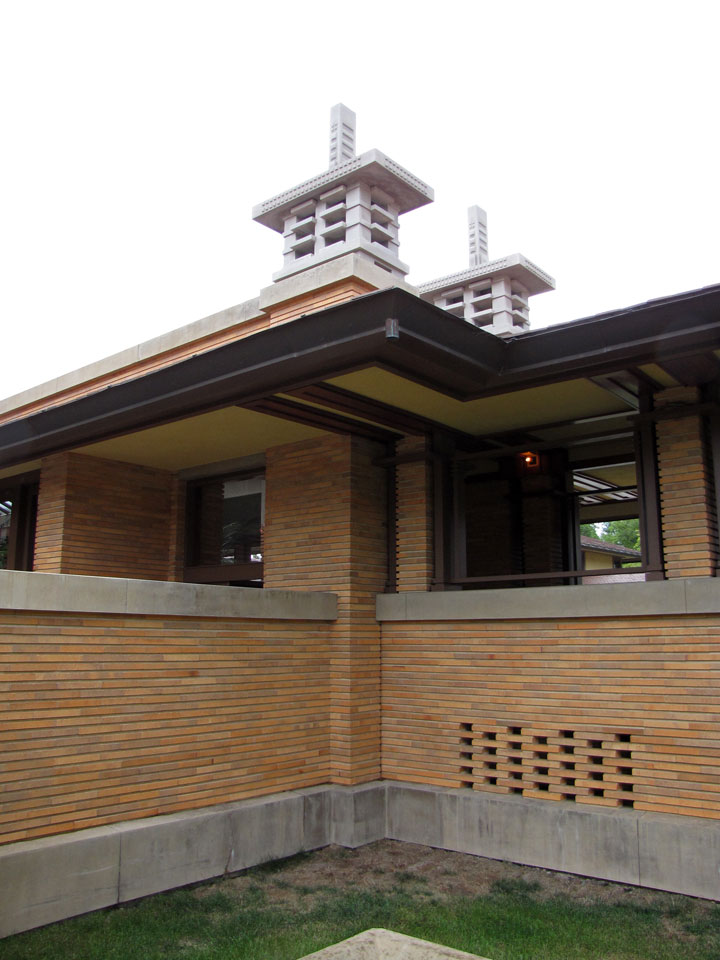
The Martin House Restoration Corporation (MHRC), founded in 1992, is a
non-profit organization with a mandate to restore the complex and to open it as
a public house museum in its 1907 condition. The Barton House was purchased on
behalf of the MHRC in 1994 and the title to the Martin House was transferred
from the University at Buffalo to the MHRC in 2002. The restoration began with
Buffalo architects Hamilton Houston Lownie Architects (HHL) hired to restore the
roof of the Martin House. The Gardener's Cottage was purchased in 2006, and the
demolished carriage house, conservatory, and pergola were reconstructed and
completed in 2007. The entire restoration is planned to be completed in 2009 or
2010. HHL continue to lead the restoration effort, with the final stages to
include the return of or recreation of the art glass windows and furniture that
Wright originally designed for the complex.
Text from Wikipedia
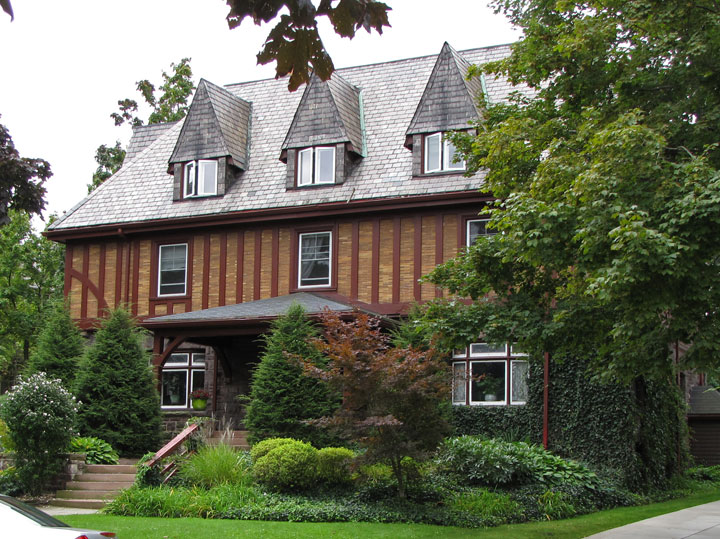
residence located across the street from the complex